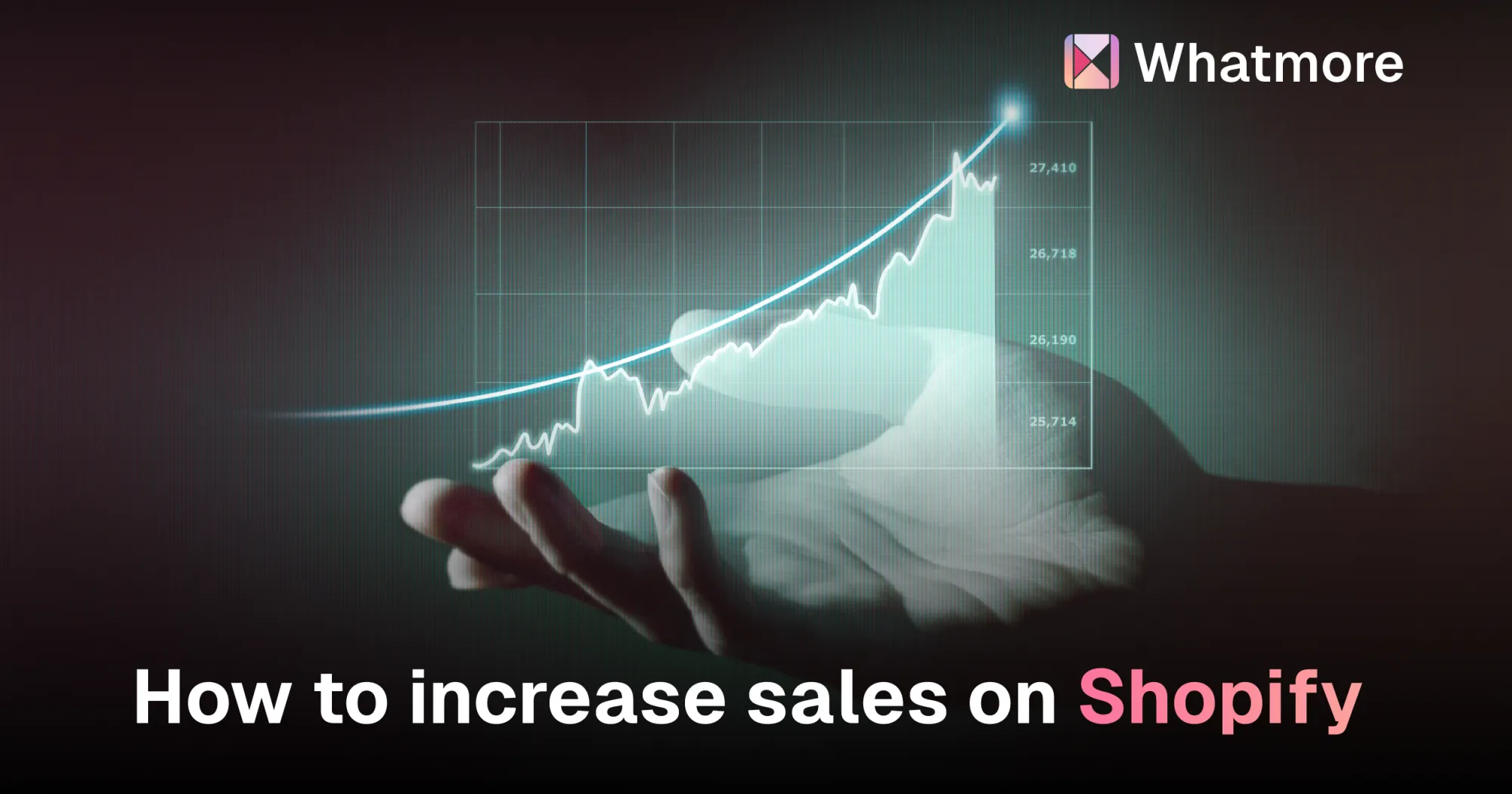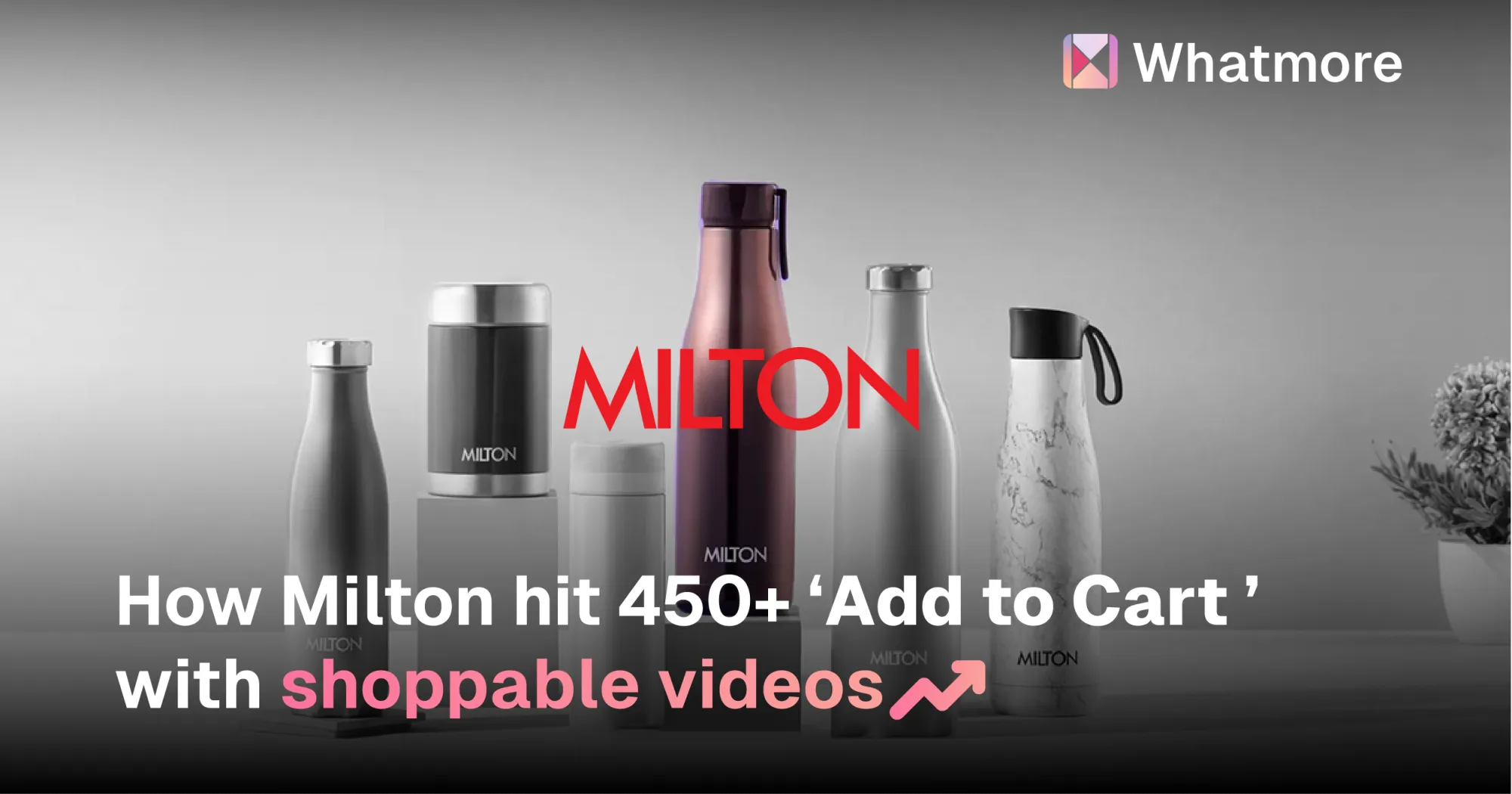Shopify powers more than a million businesses in over 175 countries, making it one of the most widely used ecommerce platforms globally. Its easy-to-use interface allows business owners to set up a store quickly, manage inventory, process payments, and track performance all from one place.
But as competition intensifies, standing out and consistently increasing sales requires more than just setting up shop. To increase your Shopify sales, it’s important to focus on making your store easy and enjoyable for customers, bringing more visitors in, and keeping them coming back for more. But increasing sales on Shopify involves more than just having a store—it requires ongoing optimization and customer-focused strategies.
In this guide, we’ll explore some useful tips to help you increase sales on Shopify, featuring real-world examples of stores that are doing it successfully..
Top 12 tips to increase sales on shopify
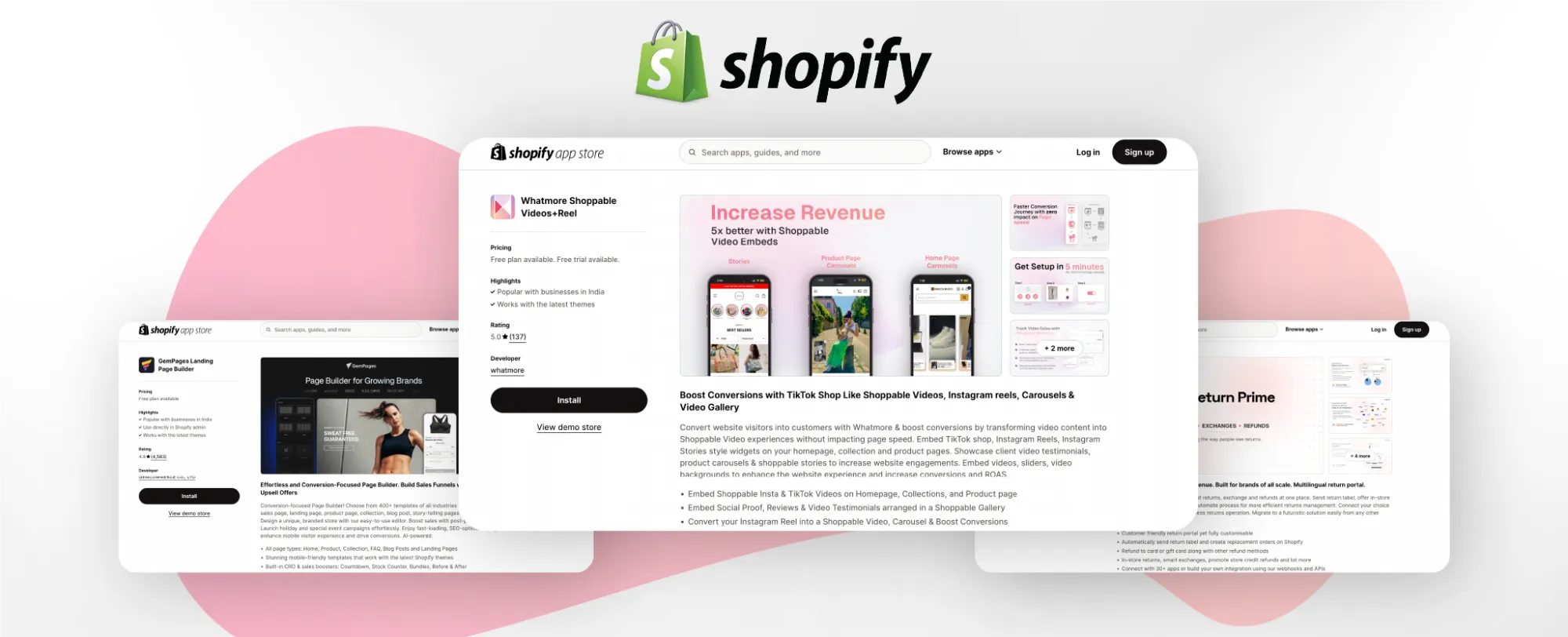
Setting up a store on Shopify is easy, but increasing sales is where the challenge lies. First, the competition is intense, with millions of stores vying for the same customers, making it hard to stand out. Even when you have a well-designed store, driving traffic can be difficult and costly. Once visitors land on your site, converting them into paying customers isn’t guaranteed, as poor design or complex checkouts often lead to cart abandonment.
Building trust with shoppers is another hurdle, especially for newer stores that lack established credibility, which takes time and effort to build through reviews and social proof. Even when you manage to get sales, retaining customers is tough; it requires strong customer service, personalized marketing, and loyalty programs to keep them coming back. Lastly, as your store grows, managing inventory, shipping, and fulfillment becomes more complex, and any hiccups in these areas can lead to lost sales.
These actionable tips that will help you increase sales on Shopify, to ensure that your business always stays one step ahead of the competition:
1. Optimize your store for mobile
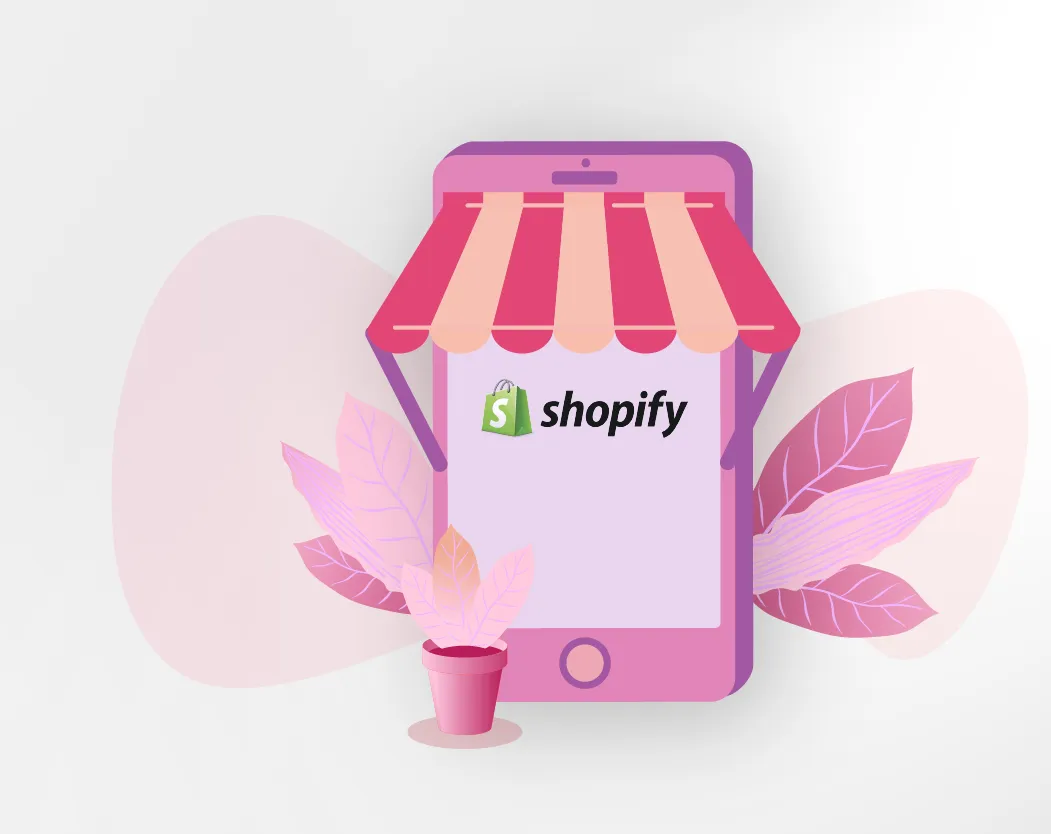
Even though optimizing for mobile is one of the most commonly repeated tips, it’s still incredibly important, and many store owners overlook it. In fact, over 70% of ecommerce traffic now comes from mobile devices, but surprisingly, only about 12% of consumers feel that the mobile experience is convenient. This gap between mobile usage and user satisfaction highlights just how many stores miss out on properly optimizing their mobile experience, which can lead to lost sales and higher cart abandonment rates. Ignoring this step can be costly in a world where mobile shopping is growing every year.
A customer who has to pinch, zoom, or wait too long for pages to load will likely leave, resulting in a lost sale.
Imagine a lead lands on your store while scrolling but the site loads slowly or the images take forever to display. They’ll likely get frustrated and leave. But if your store is optimized for mobile—fast-loading pages, responsive images, and an easy-to-navigate interface—they can quickly browse products, add items to her cart, and make a purchase without interruptions.
- Responsive design: Ensure your website automatically adjusts to different screen sizes. Shopify offers mobile-responsive themes, but testing on multiple devices is important.
- Fast load times: Compress images, minimize code, and ensure product pages load quickly. The faster, the better.
- Mobile-optimized checkout: Simplify the checkout process for mobile users by incorporating mobile payment options like Apple Pay or Google Pay.
2. Leverage high-quality product images and videos
Online shoppers can’t touch, feel, or try on your products. High-quality images and videos compensate for this by giving customers a detailed and realistic view of what they’re buying. Video shopping has been on an exponential rise and rightly so. The more visually appealing and informative your product images, the more likely customers will trust the quality of your products and make a purchase.
Let’s say you’re selling handmade jewelry. While customers can’t see the intricate detailing in person, showcasing close-up, high-resolution images along with a video showing someone wearing the jewelry in natural light will help them imagine owning it. A static image might not do justice to the product's shimmer or texture, but a video showing the product’s full shine could be the tipping point.
In addition to regular videos, shoppable videos can significantly enhance the shopping experience. These allow customers to click directly on the video to purchase the product they’re viewing, streamlining the buying process. For example, a video of someone wearing a necklace can have clickable links within the video itself, leading the viewer straight to the checkout page. This not only adds convenience but also increases engagement and conversion rates. You can save hours by using tools like Whatmore Studio to create AI-powered videos within seconds.
- Multiple angles: Show your product from every angle so customers feel confident about what they’re purchasing.
- Zoom functionality: Allow customers to zoom in on product images to see details clearly.
- Lifestyle photos: Show your product being used in a real-life setting (e.g., someone wearing the jewelry on a night out).
- Product videos: Include short, engaging videos showing the product in action to increase conversion rates. Though it might sound like a lot of work, you can use tools Whatmore Studio to create ready-to-share videos within seconds.
- Shoppable videos: Enable customers to click directly on items within videos, making it easier to purchase while they’re engaged with the content.
3. Use customer reviews and social proof
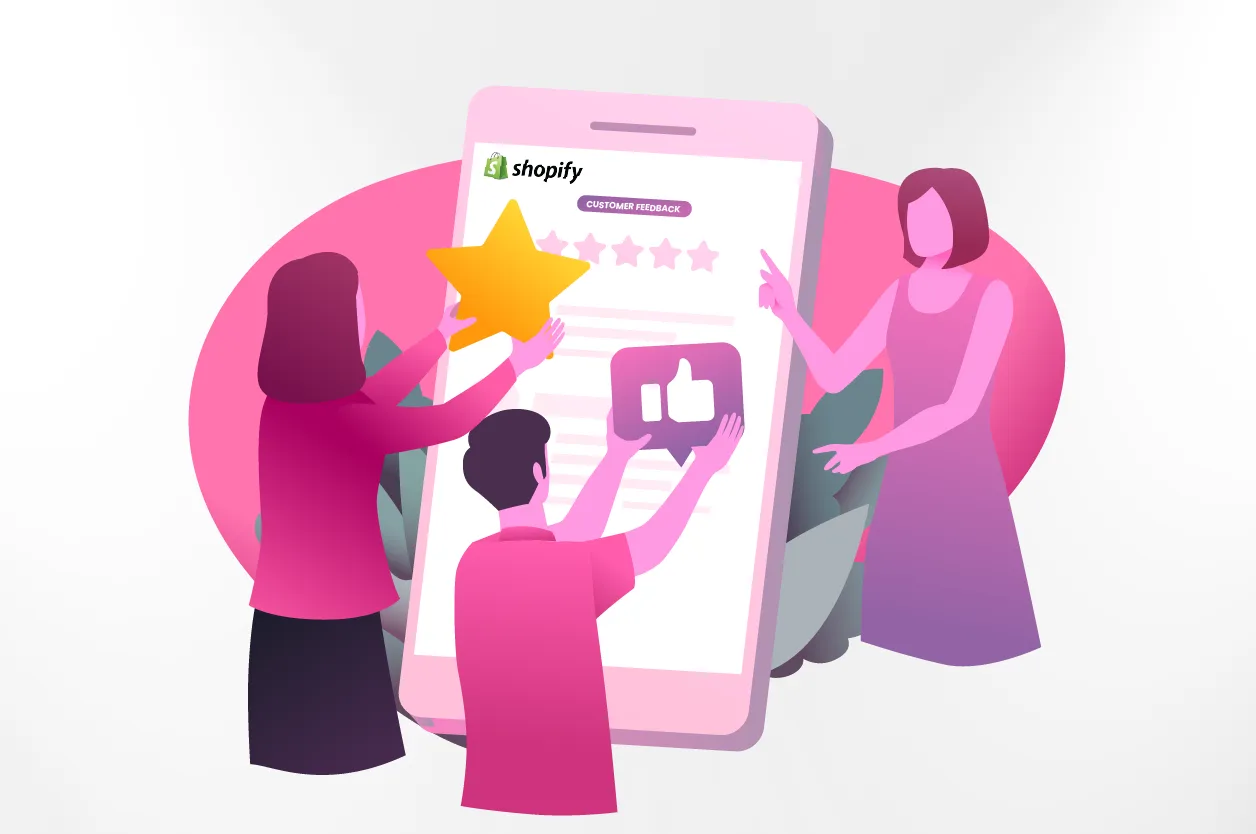
Shoppers are naturally skeptical of marketing claims. Customer reviews provide the social proof needed to reassure them. Research shows that 91% of people read online reviews before making a purchase decision. Reviews build trust and validate the quality of your products.
Imagine you're looking to buy a new skincare product. You come across two different brands, one with dozens of positive reviews and another with none. Chances are, you’ll trust the one with reviews, even if the products are similar. Reviews, especially when customers share their before-and-after photos, make the product more tangible and trustworthy.
- Prominently display reviews: Make sure customers can easily access reviews on your product pages.
- Incorporate user-generated content: Encourage customers to submit photos or videos using your product for added authenticity. Reward them for this by offering them a freebie or a discount.
- Feature testimonials: Use customer testimonials to build credibility and show how your product solves real-life problems.
4. Offer free shipping wherever possible
Shipping costs are one of the top reasons for cart abandonment. Studies show that shoppers are more likely to complete a purchase when free shipping is available. It reduces friction in the buying process and can often make or break a sale.
Imagine you’re shopping for a $50 item and everything is going smoothly. But when you reach checkout, you’re hit with a $10 shipping fee. This might cause you to reconsider your purchase or abandon the cart. However, if free shipping is offered on orders over $50, you’ll likely complete the purchase or even add an extra item to your cart to qualify.
- Free shipping options for all orders: Offer free shipping across your store, especially if your margins allow it.
- Threshold-free shipping: Offer free shipping on orders above a certain value, encouraging larger cart sizes.
- Free shipping promotions: Run special offers for limited times to create urgency.
5. Simplify the checkout process
A complicated checkout process is one of the primary reasons for abandoned carts. In fact, around 70% of customers abandon their carts due to friction during checkout. The fewer steps and distractions between adding a product to the cart and completing the purchase, the better.
Think about a busy mom who’s added items to her cart but gets interrupted while checking out. If the process is long and complicated, she might never come back to complete the purchase. However, if the checkout is simple—just a couple of steps with options like guest checkout and auto-filled address forms—she can complete her purchase within minutes, even if she’s in a rush.
- Fewer steps: Reduce the number of steps in the checkout process, keeping it to the essentials.
- Guest checkout: Don’t force customers to create an account—offer guest checkout for first-time buyers.
- Payment options: Offer convenient payment methods like PayPal, Google Pay, and Apple Pay to speed up the process.
- Clear trust badges: Display security and payment icons to reassure customers that their information is safe.
6. Implement cart recovery
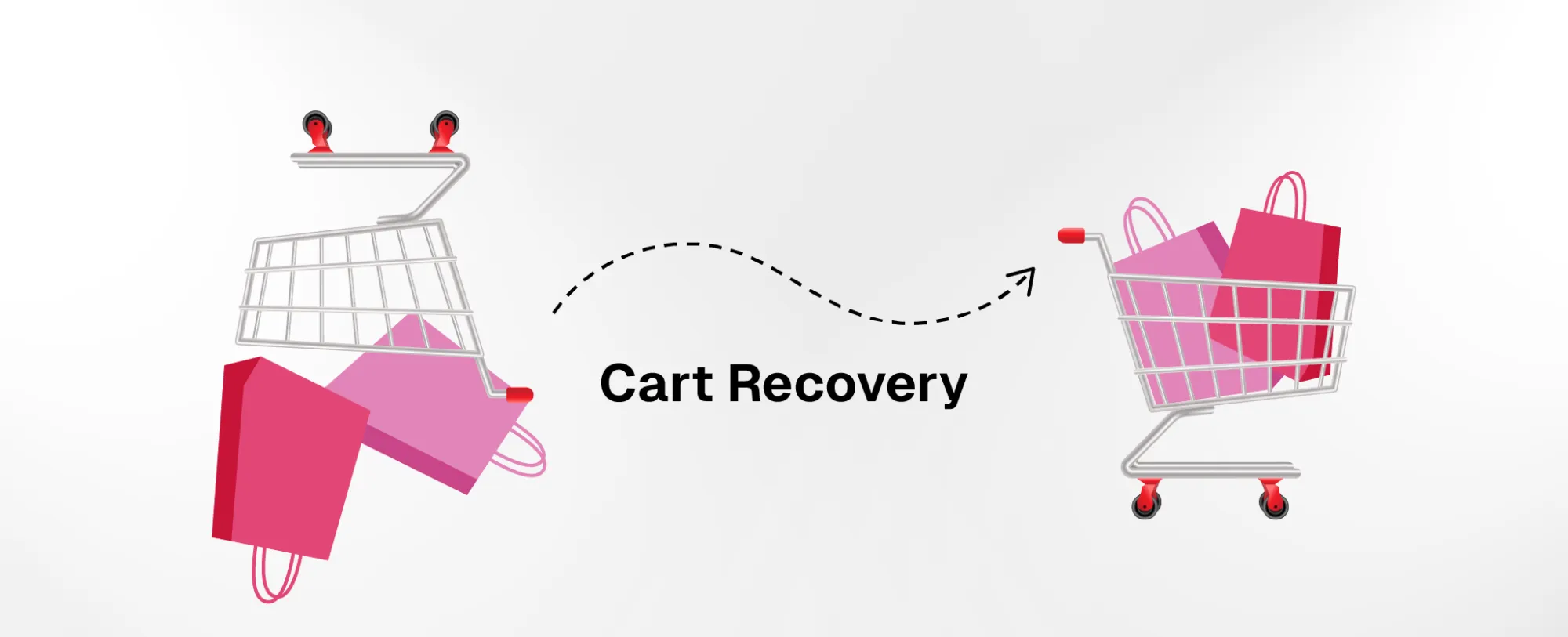
Cart abandonment happens to nearly every store. By sending timely, personalized reminders, you can recover many of those lost sales. Cart recovery emails are a proven way to re-engage customers and convert abandoned carts into completed purchases.
If a customer adds an item to their cart but doesn’t check out, an automated email sent within an hour reminding them of the product (and possibly offering a discount or free shipping) can nudge them back to complete the purchase. For example, “Hey there, you left this great product in your cart—still interested? Complete your order now and get 10% off!”
- Automated cart recovery emails: Set up automated emails to remind customers about abandoned items.
- Personalized messages: Mention the specific product left in the cart and consider offering an incentive (discount, free shipping).
- Multiple follow-ups: Send multiple emails, with the first email sent within an hour and follow-up emails 24 hours later.
7. Offer upsells and cross-sells
Upselling and cross-selling help increase your average order value (AOV) by suggesting additional or higher-priced items to customers already on the verge of buying. This is a great way to boost revenue without acquiring new customers.
Say a customer is purchasing a pair of running shoes. Before they check out, you could upsell them by suggesting a more premium model for just $20 more, or cross-sell a pair of performance socks to complement their shoes. By presenting these options at the right time (such as on the product page or during checkout), you increase the chances of them spending more.
- Related products: Display related products on product pages or during checkout to encourage add-ons.
- Upsell higher-end versions: Suggest upgrades to more expensive versions of products customers are viewing.
- Bundle offers: Offer bundles where related products are sold together at a discounted rate.
8. Use email marketing

Email marketing is one of the most effective ways to engage customers and drive repeat sales. With a return on investment (ROI) of $36 for every $1 spent, it’s a channel worth prioritizing. Email allows you to build relationships, send personalized offers, and keep customers coming back.
If a customer buys a pair of winter boots from your store, you could follow up a week later with an email recommending complementary products like waterproof sprays or wool socks. Offering them a 15% discount on these related products makes it more likely they’ll purchase again.
- Automated welcome series: Set up a welcome email series that introduces new subscribers to your brand and offers a discount on their first purchase.
- Personalized recommendations: Use customer behavior data to send relevant product suggestions or offers.
- Seasonal campaigns: Run seasonal or holiday-specific email campaigns to drive urgency and excitement.
9. Run limited-time offers and flash sales
Flash sales and limited-time offers create a sense of urgency that encourages quick decision-making. Shoppers are more likely to act if they know the deal won’t last long, which can significantly increase sales in a short period.
Let’s say you’re launching a new product line. You could run a 24-hour flash sale with a 15% discount on all new products. By adding a countdown timer on your website and sending email notifications, you create urgency and drive impulse purchases.
- Clear timeframes: Display a countdown timer for your flash sales to create a sense of urgency.
- Exclusive offers: Provide discounts or deals that are only available for a limited time.
- Strategic timing: Run flash sales during high-traffic periods like weekends or holidays when shoppers are more likely to make impulsive purchases.
10. Enhance customer experience
Offering a great product isn’t enough if the shopping experience doesn’t meet customer expectations. A positive customer experience encourages repeat purchases, creates brand loyalty, and drives word-of-mouth recommendations. From the browsing stage to post-purchase support, everything should be smooth and enjoyable.
Apple is a great example of a brand that prioritizes customer experience. Their website is easy to navigate, offers detailed product descriptions, and provides excellent customer support through various channels. Customers appreciate their seamless experience, making them more likely to return for future purchases.
- Fast website performance: Optimize your website to load quickly, even with high-quality images and videos.
- Clear product details: Build concise and informative Product Detail Pages that answer customer questions, highlight benefits, and address concerns.
- Proactive customer support: Offer live chat or chatbot support to answer customer questions in real time, providing instant solutions and reducing friction.
- Hassle-free returns: Make returns and exchanges easy by having a clear and customer-friendly returns policy.
11. Use influencer marketing
Influencer marketing taps into the power of social proof. By leveraging the trust and engagement influencers have with their audience, you can expand your reach, increase brand visibility, and drive more sales. Customers tend to trust recommendations from people they follow, so a positive review or mention by an influencer can lead to immediate results.
Gymshark, a fitness apparel brand, built its entire brand through influencer marketing. By collaborating with fitness influencers who had loyal followings, Gymshark quickly gained credibility and saw a significant rise in sales.
- Micro-influencers: Partner with smaller influencers who have highly engaged and targeted followers. These influencers may not have massive followings, but their audience is more likely to trust their recommendations.
- Affiliate programs: Set up an affiliate program where influencers earn a commission for every sale they drive. This can incentivize them to promote your brand consistently.
- Product reviews and unboxings: Send products to influencers to review or unbox on social media. Seeing your product in action, endorsed by someone consumers trust, can lead to increased conversions.
12. Focus on SEO for organic traffic
Search engine optimization (SEO) allows you to attract organic traffic without having to rely heavily on paid advertising. Ranking higher in search engine results means more people will find your store naturally when searching for products you sell. Over time, good SEO practices can provide a steady stream of traffic and sales.
Luxy Hair, a Shopify store selling hair extensions, invested in SEO by optimizing their product pages and blog content. They created detailed guides about hair extensions, which not only helped them rank higher on Google but also provided valuable information to potential customers. As a result, they saw an increase in organic traffic and sales.
- Keyword research: Use tools like Google Keyword Planner, Ahrefs, or SEMrush to find keywords your target audience is searching for. Incorporate these keywords naturally into product descriptions, titles, and meta tags.
- Optimize product pages: Make sure each product page has a unique, SEO-optimized title, description, and URL. Use relevant keywords but keep it natural—avoid keyword stuffing.
Create high-quality content: Write blog posts, how-to guides, interactive videos or buying guides that provide value to your customers while helping you rank for long-tail keywords. For example, if you sell eco-friendly products, write articles about “how to live a sustainable lifestyle” and link them to relevant products in your store. You can pick different shoppable video content ideas to create highly converting content.
- Technical SEO: Ensure your website’s technical SEO is sound by optimizing image alt texts, fixing broken links, improving site speed, and having a mobile-friendly site structure.
Final thoughts
Increasing sales on Shopify is about more than just launching a store and hoping for the best. It’s about creating a thoughtful strategy that enhances your customers' experience, continually improves your marketing efforts, and optimizes every step of the sales process. By focusing on mobile optimization, using high-quality images and videos, simplifying the checkout process, and investing in SEO, you can build a store that doesn’t just attract visitors—it turns them into loyal, repeat customers.
If you're looking for a way to simplify your content creation and take your Shopify store to the next level, try Whatmore.ai to see how it can make a difference for your store. With features like shoppable videos, AI-powered tools for creating engaging product content, and time-saving automations, Whatmore.ai helps you create memorable experiences for your customers.
